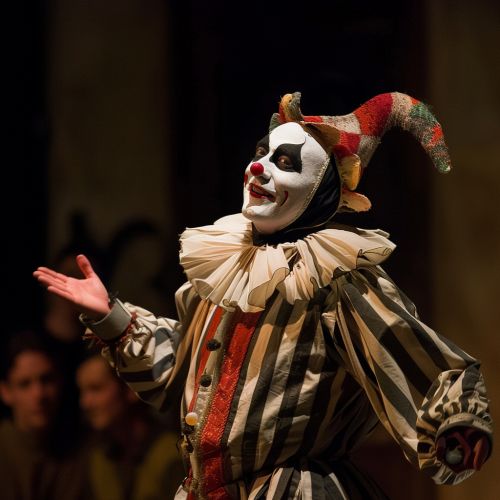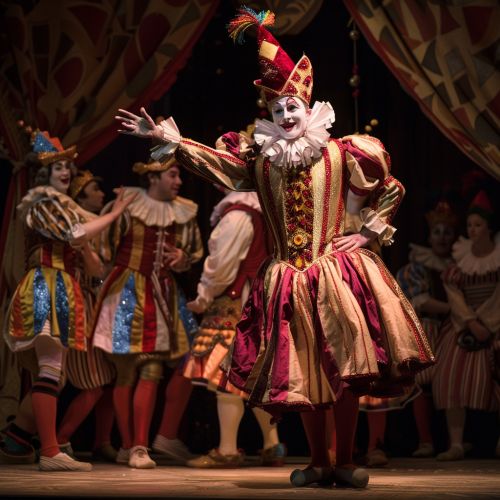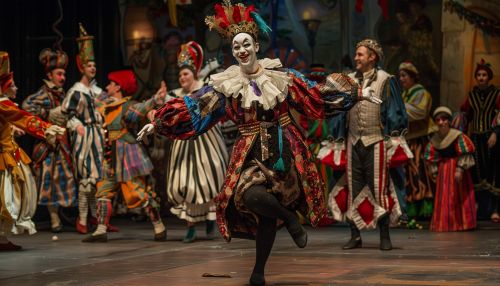Harlequin
Origins and History
The term Harlequin is believed to have originated from the Old French word "hellequin", which was used to describe a leader of a group of demons in popular folklore. The character has undergone significant transformations over the centuries, evolving from a devilish trickster to a light-hearted and nimble servant in the Italian Commedia dell'arte, and eventually to a romantic hero in the 18th-century French pantomime.


The first known appearance of Harlequin dates back to the 11th century in France. He was initially portrayed as a masked and mischievous demon or a wild goblin-like creature in various folk tales and legends. However, the character's demonic traits gradually faded away, and by the 16th century, Harlequin had become a stock character in the Commedia dell'arte, a form of professional theatre that originated in Italy.
Role in Commedia dell'arte
In the Commedia dell'arte, Harlequin was portrayed as a clever and irrepressible trickster, always ready to cheat his master for his own benefit. He was often depicted as a servant or valet, known for his acrobatic agility and his humorous, often bawdy, dialogue. The character was usually dressed in a tight-fitting costume, decorated with multicoloured patches, and wore a black half-mask with a mischievous grin.
Harlequin's character was largely defined by his physical agility and his comic dialogue. He was known for his slapstick humor and his ability to create laughter through his exaggerated movements and actions. His role in the Commedia dell'arte was primarily that of a comic servant, often paired with his counterpart, the more serious and sober Brighella.
Transformation in French Pantomime
The character of Harlequin underwent a significant transformation in the 18th century with the advent of French pantomime. Under the influence of French playwright and performer, Jean-Gaspard Deburau, Harlequin evolved from a comic servant to a noble and romantic hero. Deburau's portrayal of Harlequin, known as "Pierrot", was characterized by his melancholic nature and his unrequited love for the character of Columbine.


In the French pantomime, Harlequin's costume also underwent changes. The multicoloured patches were replaced by a more elegant and sophisticated attire, usually a tight-fitting suit of brilliant red, blue, and green diamonds. The black half-mask was retained, but it was often adorned with a tear, symbolizing Pierrot's unrequited love for Columbine.
Harlequin in Modern Times
In modern times, the character of Harlequin has been adapted and reinterpreted in various forms of media, including literature, film, and television. The character has also been used as a symbol and motif in various cultural contexts. For example, in the fashion industry, the Harlequin pattern, characterized by its arrangement of brightly colored diamonds or rectangles, has been used in various clothing designs and accessories.
In literature, the Harlequin character has been used to represent a variety of themes and concepts, such as the fool, the trickster, and the romantic hero. Notable examples include the Harlequin romance novels, a popular series of romance novels published by Harlequin Enterprises, and the character of Harley Quinn in the DC Comics universe, who was inspired by the Harlequin character.
